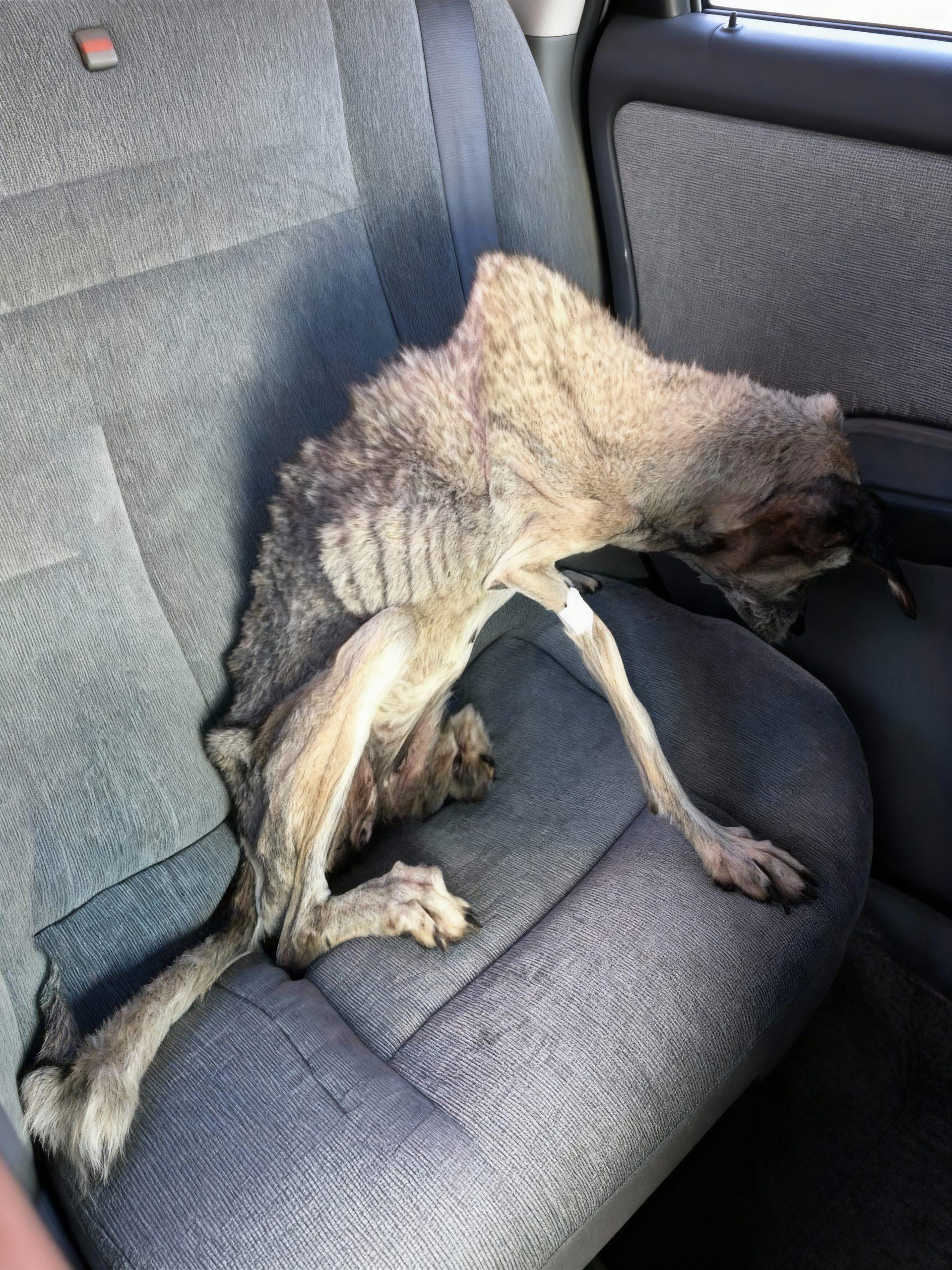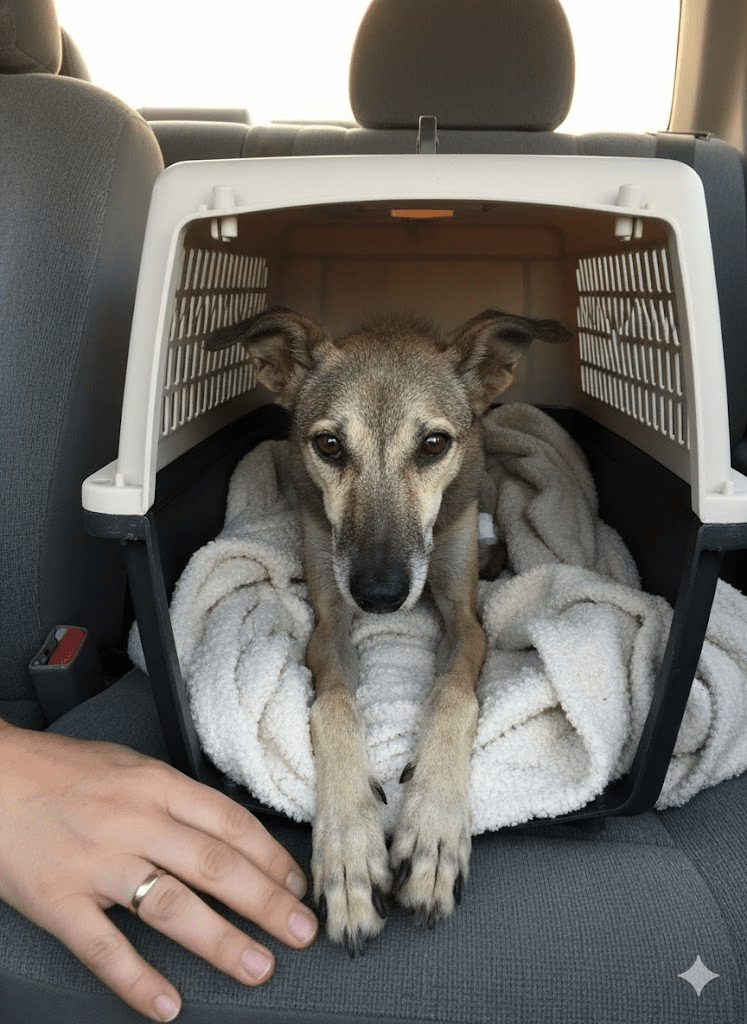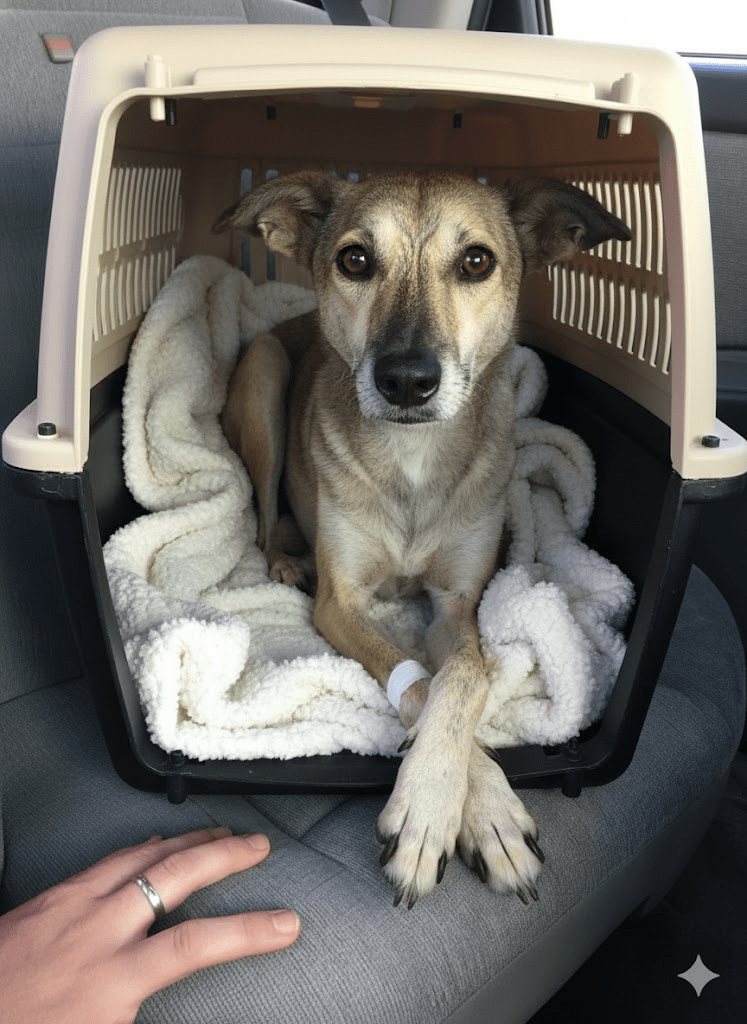The image before us is a stark, poignant tableau, capturing a moment of profound vulnerability that speaks volumes without a single uttered word. In the dimly lit interior of what appears to be a car, a severely emaciated canine lies curled on the back seat, a fragile bundle of bones and matted fur. Its ribs protrude with alarming clarity, a skeletal roadmap etched beneath its thin coat, bearing witness to a prolonged and agonizing struggle against starvation. The dog’s head is drooped, its gaze, if visible, would undoubtedly convey a deep weariness, perhaps even a resignation that only the most neglected creatures can truly know. A small white bandage, stark against its muted fur, hints at recent medical intervention, a beacon of hope in an otherwise desolate scene. The setting—an ordinary car seat—serves to amplify the extraordinary plight of this animal, underscoring how easily such suffering can occur in the most mundane of environments. This photograph is more than just a picture; it is an urgent appeal, a silent scream for compassion and action, urging us to look beyond the frame and confront the grim reality of animal abandonment and neglect. It challenges us to consider our collective responsibility towards creatures who depend entirely on human kindness for their survival and well-being.

The silent epidemic of animal abandonment is a global tragedy, often hidden from plain sight, yet its consequences are devastating for the millions of animals left to fend for themselves each year. Whether driven by economic hardship, unforeseen life changes, or a callous disregard for a pet’s welfare, the act of abandoning an animal sets in motion a chain of suffering that is almost unimaginable. These animals, once cherished companions or innocent strays seeking warmth and sustenance, are suddenly thrust into a harsh world for which they are ill-equipped. They face hunger, thirst, exposure to the elements, disease, and the constant threat of injury or death from traffic, other animals, or cruel individuals. The emotional toll is equally profound; animals are sentient beings capable of feeling fear, confusion, and loneliness. The bond they form with humans, often one of unwavering loyalty and trust, is shattered, leaving them vulnerable and heartbroken.

The road to recovery for an abandoned animal is long and arduous, demanding immense patience, resources, and unwavering dedication from those who step in to help. The immediate priority is always medical care: addressing severe malnutrition, dehydration, parasites, and any injuries or illnesses sustained during their time alone. This often involves specialized diets, intravenous fluids, medications, and sometimes even surgical procedures. Beyond the physical ailments, there’s the monumental task of healing psychological wounds. Many abandoned animals exhibit extreme fear, anxiety, or aggression as a result of their trauma. Rebuilding trust requires consistent, gentle interaction, a safe and stable environment, and often the expertise of animal behaviorists. Each small victory—a wagging tail, an offered paw, a moment of relaxed sleep—is a testament to the animal’s resilience and the power of compassionate care.

However, the story does not end with rescue and rehabilitation. A crucial step, and often the most challenging, is finding these deserving animals their forever homes. Adoption campaigns are vital, raising awareness about the availability of rescued pets and dispelling misconceptions about their suitability as companions. Many people still prefer to purchase animals from breeders or pet stores, unaware of the incredible variety of loving, healthy, and often pre-trained animals waiting in shelters. Adoption not only saves a life but also opens up space in overcrowded shelters for other animals in desperate need. It’s a testament to the enduring human-animal bond, demonstrating that with patience and love, even the most traumatized animals can thrive and become cherished members of a family.

Addressing the root causes of abandonment requires a multi-faceted approach, moving beyond reactive rescue efforts to proactive prevention. Education is paramount. Pet owners need to be fully aware of the significant commitment involved in animal care—financially, emotionally, and time-wise—before bringing a pet into their lives. This includes understanding the costs of food, veterinary care, grooming, and training, as well as the need for daily exercise and companionship. Responsible breeding practices are also critical, helping to reduce the number of unwanted animals that end up in shelters. Furthermore, community support programs, such as affordable spay/neuter services, temporary foster care for owners facing hardship, and pet food banks, can provide crucial lifelines that prevent owners from feeling forced to abandon their pets. Legislation that holds owners accountable for animal neglect and abandonment, coupled with effective enforcement, also plays a vital role in deterring such cruel acts.







